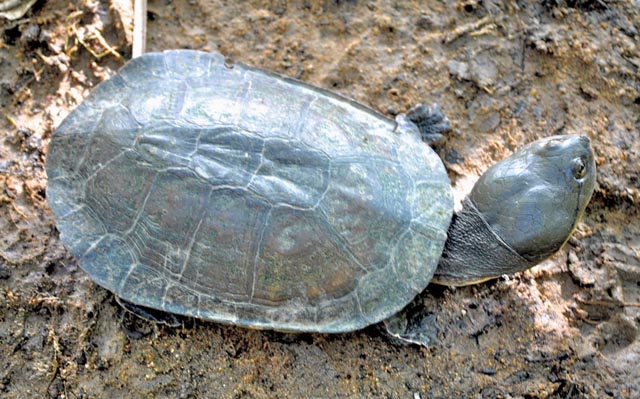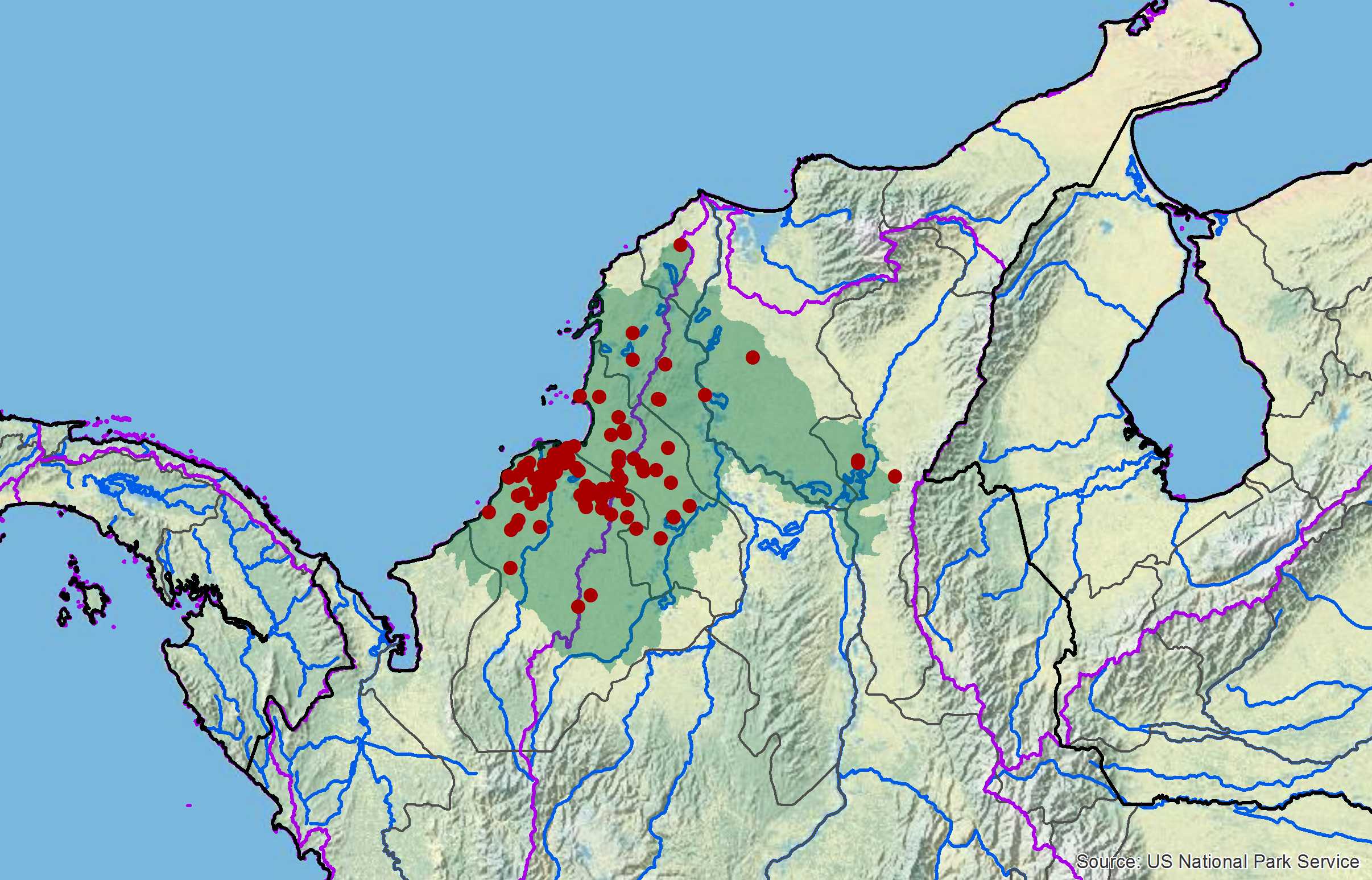Mesoclemmys dahli, 069
Mesoclemmys dahli (Zangerl and Medem 1958) –
Dahl’s Toad-Headed Turtle, Carranchina, Tortuga Montañera
German Forero-Medina1,2, Olga V. Castaño-Mora3, Gladys Cárdenas-Arevalo3, and Guido Fabián Medina-Rangel3
1Wildlife Conservation Society, Calle 2 # 42-23, Cali, Colombia [[email protected]];
2Turtle Survival Alliance, Calle 2 # 42-23, Cali, Colombia;
3Instituto de Ciencias Naturales, Universidad Nacional de Colombia, Bogotá, Colombia
[[email protected], [email protected], [email protected]]
Summary. – Dahl’s Toad-headed Turtle (Family Chelidae) is a small to medium-sized freshwater turtle (carapace length to 297 mm) endemic to small streams and pools with a restricted range within the Tropical Dry Forest Biome of northern Colombia. It is omnivorous, feeding mainly on snails, crustaceans, and aquatic insects. Mesoclemmys dahli spends considerable time on land, particularly during the dry season when it may estivate. Home ranges may be as large as 31 ha during a year cycle and it may use or cross streams, riparian vegetation and contiguous areas, pastures, and lentic water bodies in the middle of open areas. Very little is known about its reproductive ecology in the wild, but nesting may occur from October to March, coupled with dry climatic conditions in the region. Although it may be abundant at some locations within the core of its range (Córdoba), only a few (less than 5) populations are known, and abundance (16–170 turtles/ha) in the eastern populations (Cesar) is generally lower than reported for other South American chelids. The species is threatened because of the high degree of transformation of its habitat for human activities such as fires, urban expansion, agriculture, and cattle. There are no populations known that inhabit well-preserved dry forests, and there is no known presence of the species in any formally protected area. Habitat restoration and establishment of a protected area for the species are measures required for its long-term persistence.
Distribution. – Colombia. Restricted to northern Colombia, north of the Andes in the departments of Córdoba, Sucre, Atlántico, Bolívar, Magdalena, and Cesar.
Synonymy. – Phrynops (Batrachemys) dahli Zangerl and Medem 1958, Phrynops dahli, Batrachemys dahli, Phrynops nasutus dahli, Mesoclemmys dahli.
Subspecies. – No subspecies have been described.
Status. – IUCN 2013 Red List: Critically Endangered (CR B1+2c; assessed 1996); TFTSG Draft Red List: Endangered (EN, assessed 2011); CITES: Not Listed; Colombian Red Data Book: Endangered (B1 + 2bc).
Citation:
Forero-Medina, G., Castaño-Mora, O.V., Cárdenas-Arevalo, G., and Medina-Rangel, G.F. 2013. Mesoclemmys dahli (Zangerl and Medem 1958) – Dahl’s Toad-Headed Turtle, Carranchina, Tortuga Montañera. In: Rhodin, A.G.J., Pritchard, P.C.H., van Dijk, P.P., Saumure, R.A., Buhlmann, K.A., Iverson, J.B., and Mittermeier, R.A. (Eds.). Conservation Biology of Freshwater Turtles and Tortoises: A Compilation Project of the IUCN/SSC Tortoise and Freshwater Turtle Specialist Group. Chelonian Research Monographs No. 5, pp. 069.1–069.8, doi:10.3854/crm.5.069.dahli.v1.2013, //iucn-tftsg.org/cbftt/.
(Adobe Acrobat 6.0 or later required)

Adult female Mesoclemmys dahli. Note the thin black head stripe.
Photo by German Forero-Medina.
Distribution:

Distribution of Mesoclemmys dahli in northern Colombia in northwestern South America. Purple lines = boundaries delimiting major watersheds (level 3 hydrologic unit compartments – HUCs); red dots = museum and literature occurrence records of native populations based on Iverson (1992), plus more recent and authors’ data; green shading = projected native distribution based on GIS-defined HUCs constructed around verified localities and then adding HUCs that connect known point localities in the same watershed or physiographic region, and similar habitats and elevations as verified HUCs (Buhlmann et al. 2009), and adjusted based on authors’ subsequent data.








